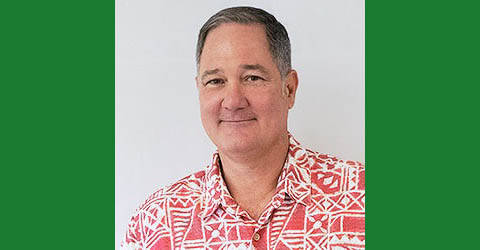Speakers painted a bleak picture Monday of Hawaii’s near-term economic future during a teleconference conducted by the state House Select Committee on COVID-19 Economic and Financial Preparedness.
Lauren Zirbel, executive director of the Hawaii Food Industry Association, told committee members that food sales at restaurants that remain open continue to drop — even though trips for food, whether to the supermarket or to restaurants offering drive-through or takeout meals — are allowable under the state’s stay-at-home order, which is in effect through April.
“Takeout is not even coming close to making up for the losses in dine-in, and hotels and restaurants have closed,” Zirbel said. “And food service options in grocery stores are down as much as 60% in some areas.”
Because of the decline, “layoffs are occurring on the supply-side of the food chain as well as on the food-service side. And many of these layoffs started to occur prior to the passage of the CARES Act,” she said.
Zirbel said a second wave of negative economic impacts is starting to take effect as Hawaii’s food industry is “seeing sales slow down on most items except staple items.”
“We’re not seeing the increases the previous two weeks when people were trying to stock up,” she said, referring to the initial wave of panic buying at the beginning of the pandemic, when people cleared store shelves of items including canned foods, bottled water and toilet paper.
“We’ve had a lot of (convenience) store closures, especially in shopping malls and tourist areas. … And we’re seeing the impact of layoffs showing up in our food industry data … as people are buying smaller quantities of lower-value items.
“This trend suggests that some people are running out of money to purchase food.”
Members of Hawaii’s congressional delegation previously said the CARES Act — short for the Coronavirus Aid, Recovery and Economic Security Act — is expected to pump about $4 billion in federal aid into Hawaii’s businesses, residents and local governments.
Carl Bonham, an economist and executive director of the University of Hawaii Economic Research Organization, said about $2 billion of that money already is earmarked for certain purposes.
That includes the $1,200 stimulus checks adult residents have been told they will receive from the federal government, as well as an increase in unemployment insurance funds. Bonham added that it’s important Hawaii receive and wisely deploy the remaining $2 billion.
He said the local banks are busy processing applications for the Small Businesses Association’s Paycheck Protection Loan Program, created through the CARES Act, to provide small businesses with zero-fee loans of up to $10 million to cover payroll and other operating expenses.
“Just like (processing) the unemployment insurance claims, this is a huge task,” Bonham said. “I think the most recent data we have for SBA loans made in the state was on the order of … 27,000 loans in an entire year. And we may be trying to make that many loans in the next several weeks.”
He said his organization is “reaching out, trying to get … data on what kinds of businesses are applying, how much they’re applying for, the sectors they are in,” to predict where the economy is going, who needs the most help and how to respond to their needs in the most effective manner.
He said the data will be used to produce a computer model to better predict economic impacts.
“There’s about $350 billion targeted nationwide (for) small businesses, and in Hawaii, over 80% of all businesses are classified as small — less than 500 employees,” he said. “And a little over half of Hawaii employees are employed by small businesses. …
“So if you look at the retail trade, arts and entertainment and accommodations and food services, there’s about 7,000 small businesses in those sectors combined. And if all of them had initially shut down and laid people off, and then were able to get … loans from the (SBA), that could put as many as 90,000 employees back on payroll.”
He said that would help take pressure off the Department of Labor and Unemployment Insurance Division.
About 170,000 unemployment claims were filed in March — almost a quarter of the state’s workforce — the Department of Labor and Industrial Relations said Friday. About 10,000 of those claims were duplicates, as the online application system was overloaded and some filers didn’t receive confirmation their applications were received.
With air traffic into the state and between islands brought to a virtual halt because of Gov. David Ige’s 14-day quarantine order for arriving passengers, Peter Ingram, president and CEO of Hawaiian Airlines, said how quickly airlines can restore flights depends on demand.
“My concern, and our concern here, is the rate of cash burn in our business and other airlines … as we are in this hibernation phase, basically, (and) whether we are going to be able to survive to get to the other side of the crisis.”
Email John Burnett at jburnett@hawaiitribune-herald.com.










